This guide will teach you everything you need to know about
- square taper bottom brackets
- how to remove and install your square taper bottom bracket with ease.
CONTENTS
- What is a Square Taper Bottom Bracket?
- What is a Cartridge Bottom Bracket?
- What is an ISIS Bottom Bracket?
SQUARE TAPER BB REMOVAL & INSTALLATION
WHAT IS A SQUARE TAPER BOTTOM BRACKET?
To get a complete picture, let’s firstly look at what preceded the square taper—the cottered bottom bracket.
Cottered Bottom Bracket
The square taper bottom bracket substituted using a cotter pin to secure the crank to the spindle with bolts into the spindle.
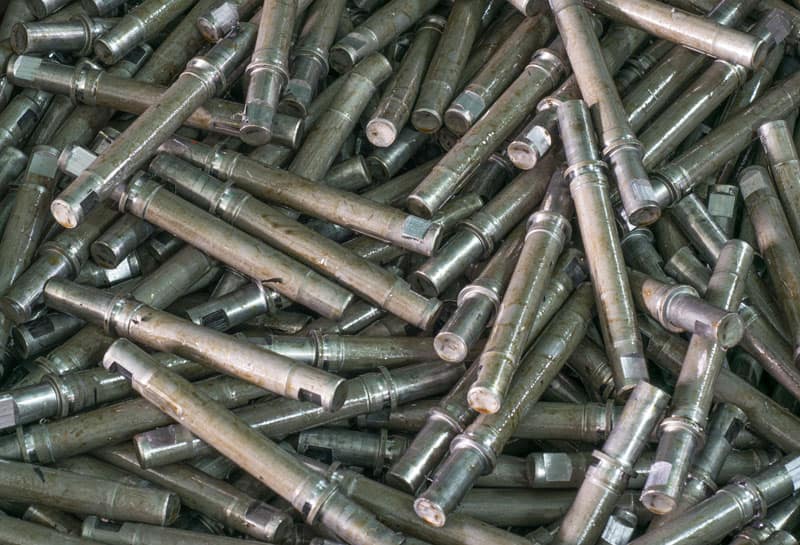
At First Components we still produce a lot of cottered bottom bracket spindles as they are still the go-to solution for many bikes. They are still a cheap and efficient crank/drivetrain solution.
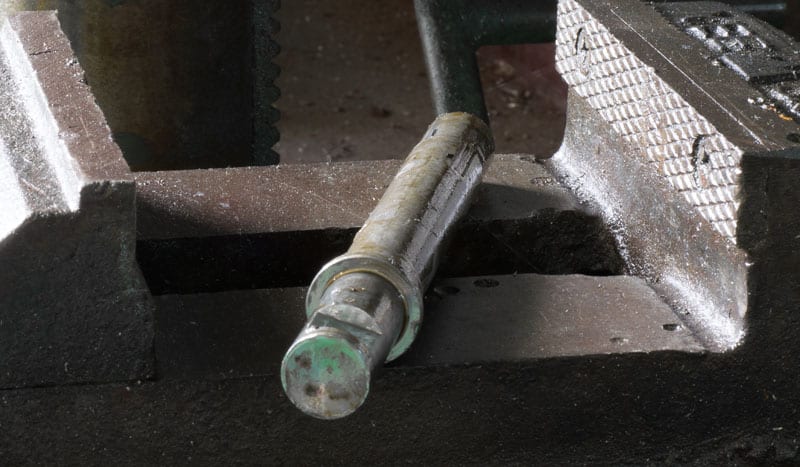
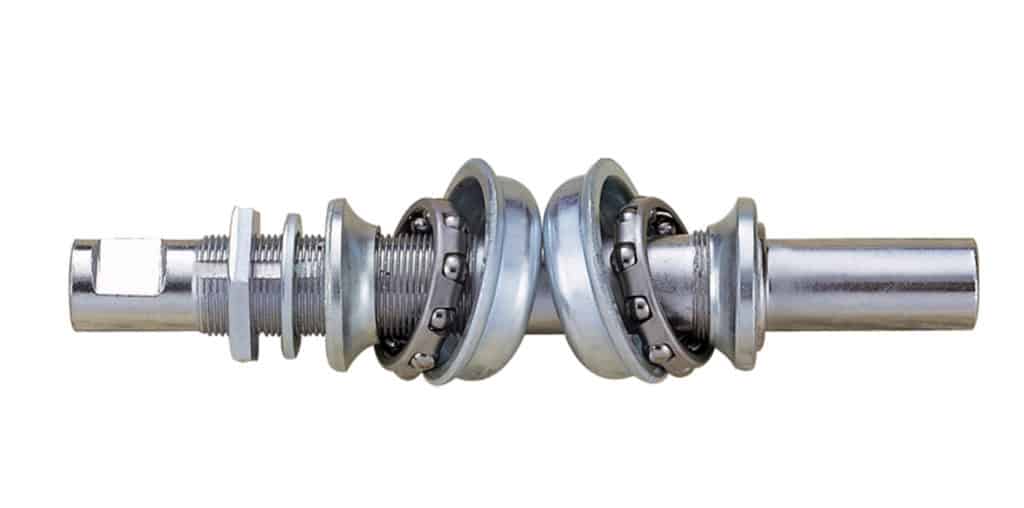
But if you’ve used a cottered crank setup there’s the hassle of keeping the cotter pin nut tight.
Well, it’s not too much trouble to tote the appropriate wrench in your kit on a ride so you can tighten the nut on the road if you find it’s worked loose.
But if your cottered crank setup becomes unusable in one way or another, then upgrading to a square taper bottom bracket will be the go.
Of course, one of the greatest incentives to move to a square taper design is that it will come in the form of a cartridge with sealed bearings.
No more regular overhaul, cleaning and regreasing . . . yes to that!
Bottom Bracket Spindle
The bottom bracket spindle—it is a spindle and not an axle since it “spins” on the bearings—left and right side has a simple box-shaped or square end.
This end is slightly tapered into a wedge shape, narrow at the end increasing in width. The crank is pushed onto the wedge once the bolts that fit into either end of the spindle apply enough pressure as you crank them to the appropriate torque.
Check out our
~Ultimate Guide to Square Taper Cranksets~
for more information on these. The post gives you all you need to know about square taper bottom brackets including how to remove and install them in great detail.
The taper is at an angle of 2° to the spindle’s centerline.
Such a design is deceptively simple, though, since the “square” end is actually an irregular octagon.
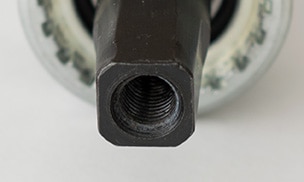
Or in other words a square with beveled edges.
The simplest form of the square taper is in this cotterless spindle.
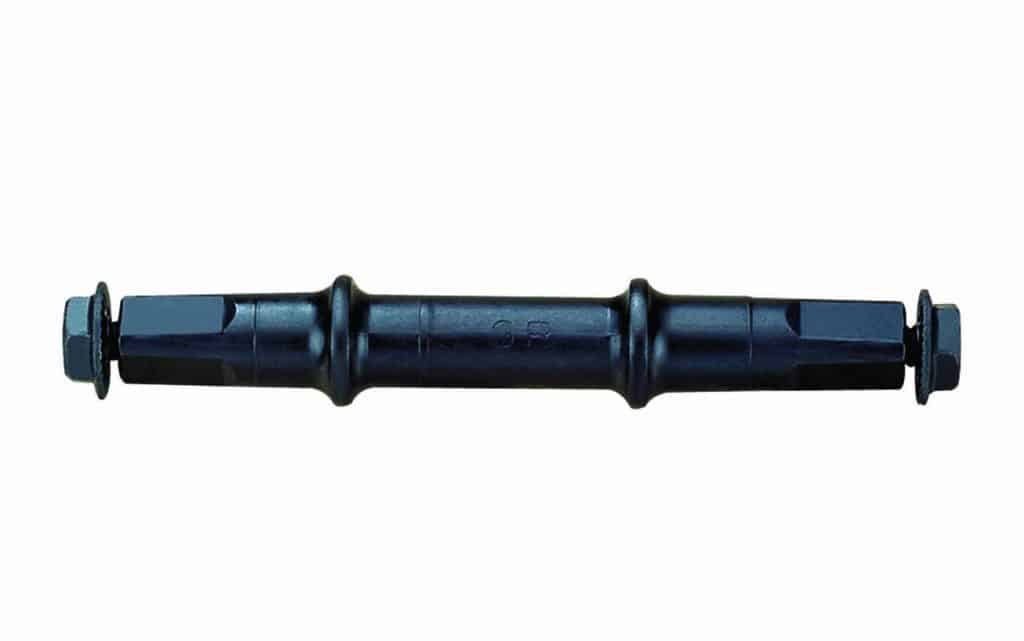
The simplest bearing setup allowing the spindle to rotate inside the bottom bracket shell:
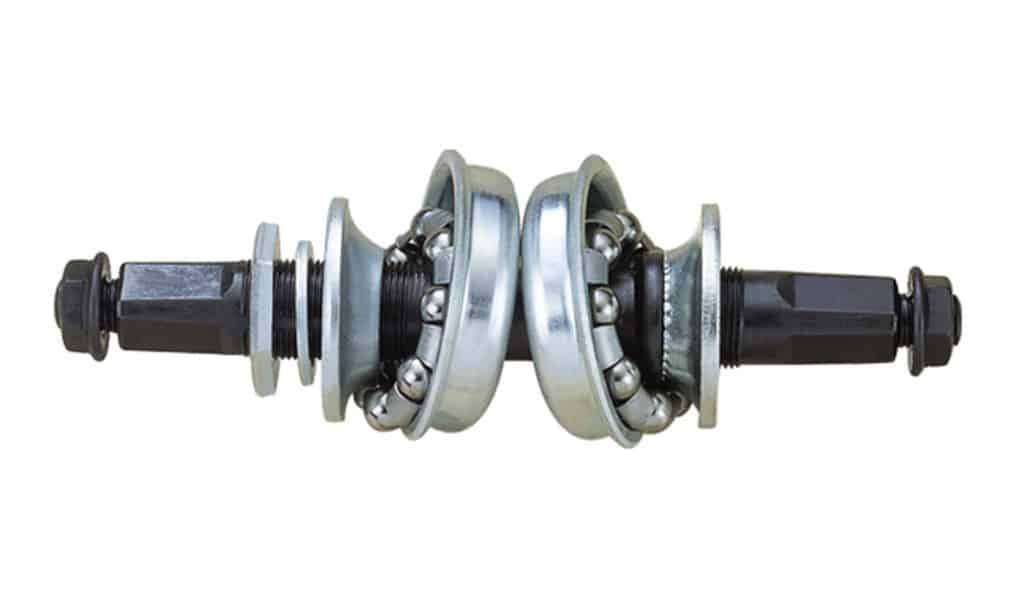
JIS Standard
While nearly all square taper spindles have the 2° angle, there are two standards for measuring the spindle’s flat edges. One is the JIS or Japanese Industry Standard. The other is the ISO or International Organization for Standardization.
Shimano and most other Asian manufacturers employ the JIS standard. Campagnolo and other European manufacturers use ISO.
JIS square taper bottom brackets are easily distinguished due to their black color and standard numbering system.
It’s not a good idea to mix the standards ie. a JIS crank on an ISO spindle or the other way round. There will be around a 4.5mm difference, for example—the JIS crank will end up moving 4.5mm further towards the bb shell than if it were fitted to a JIS spindle.
Combining the components from these opposing standards is possible, though, if you address the technical issue of the chainline.
The critical thing is your spindle length: as long as you can set up the correct chainline you will be good to go. But, again, best never to mix standards if you can at all avoid it.
If you are looking to replace a cottered crank setup with a square taper setup, then look no further than a cartridge bottom bracket.
WHAT IS A CARTRIDGE BOTTOM BRACKET?
Most square tapered bottom brackets come in the form of a “cartridge” and are thus called “cartridge” bottom brackets . . . no surprise there. . .
There are several types of square taper cartridge bottom bracket are available on the market today.
I’ll start with First Components’ NC99 because it is unique in the market—a (patented) press fit square taper bottom bracket.
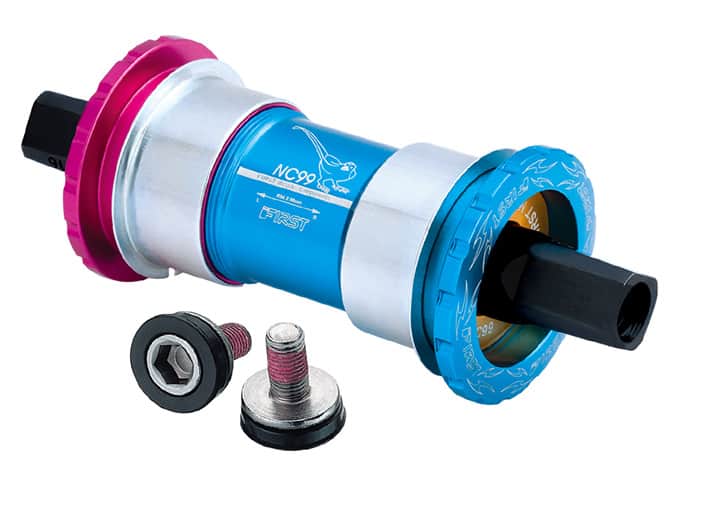
What happens if you screw up removing an old square taper bottom bracket from your bike that’s been there for ages.
The unit is so hard to break free that you ruin the threads getting it out!
You have two choices:
- discard the frame for a new one
- re-cut the threads
Add to these a third—don’t worry about the stripped thread. Simply install this press fit cartridge square taper design into your ruined bottom bracket shell. Install your old cranks, and away you go . . .
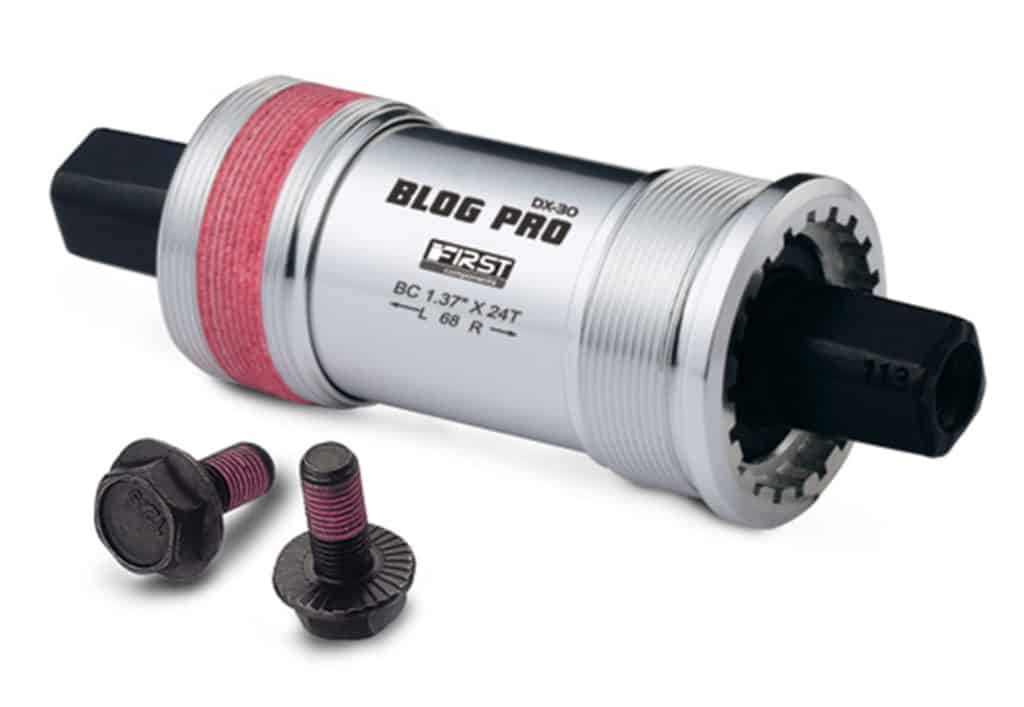
Besides this single-case instance, other types include bottom brackets with alloy cups and an alloy sleeve.
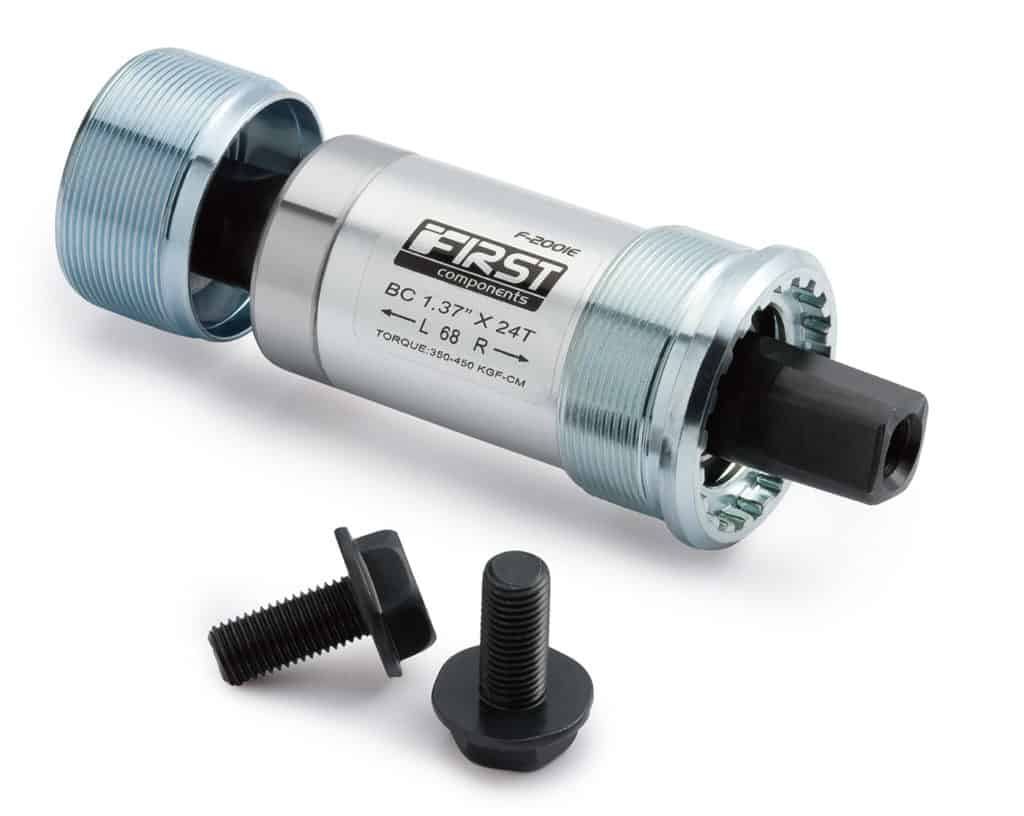
Cartridges with two steel cups and an alloy sleeve.
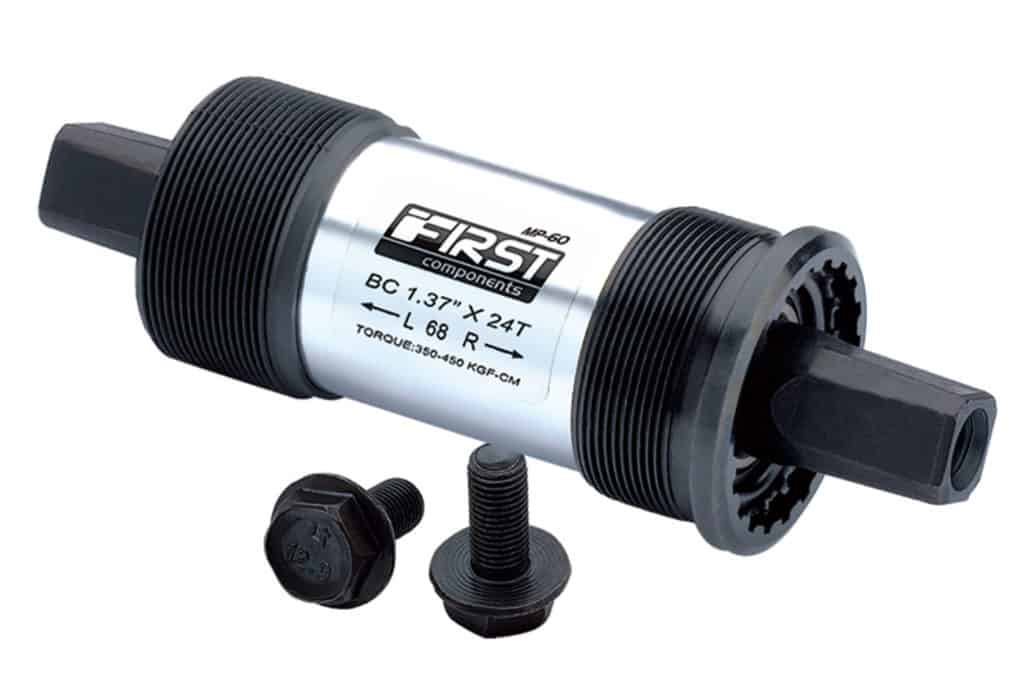
Cartridges with two nylon cups and alloy sleeve.
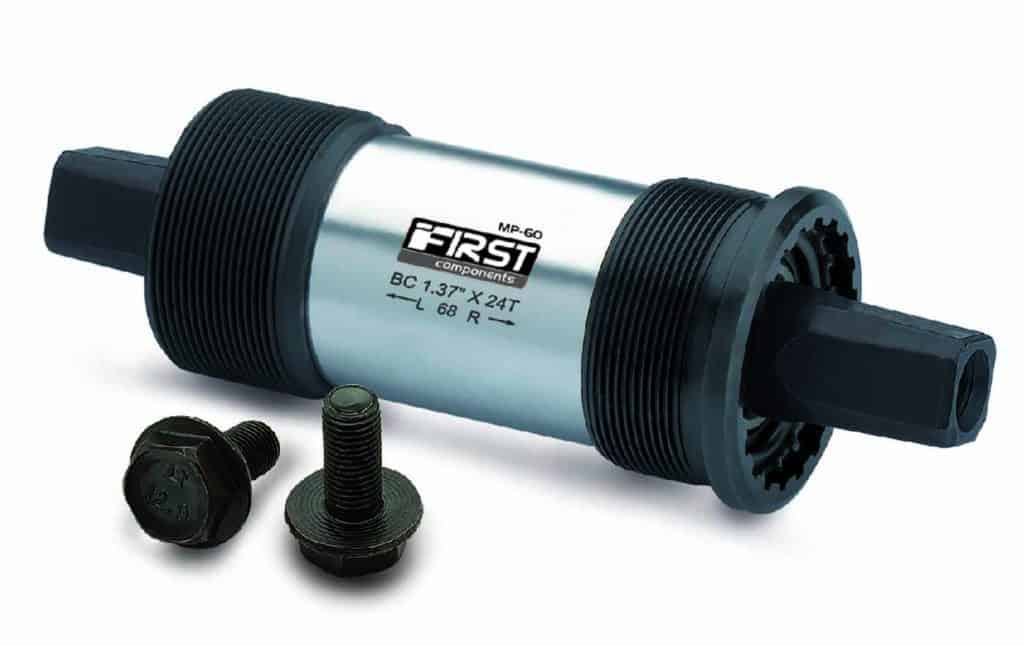
One steel and one nylon cup with an alloy sleeve.
If there is one reason to upgrade from a cottered setup to a square taper BB then upgrading via a cartridge BB would be it.
Cartridge bottom brackets are cheap and convenient. They can last many years not least because they are sealed from the elements, ie.they contain a “sealed” bearing.
There is no need to service this type of bottom bracket. If you are racking up thousands of kilometers in the saddle every year, then you may have to replace one sooner than later.
Simply remove the old bottom bracket and replace it with the new. I’ll shortly give you a detailed set of illustrated instructions on how to this with a minimum of trouble.
To come to complete terms with the modern square taper cartridge bottom bracket, you firstly need an understanding of the ISIS or International Splined Interface Standard.
WHAT is an ISIS BOTTOM BRACKET?
Following the introduction of dual shift levers in 1990, Shimano came out with Hollowtech cranks and the accompanying Octalink bottom bracket standard in 1996.
Eight splines (hence the “Octa” in “Octalink) each 2mm in width and 5mm apart replaced the square taper bottom bracket spindle’s four faces. The crank sits snugly on the splines without the need to jam the crank onto the spindle as with a square taper design.
The precision engineering affording minimal tolerances is key here.
The King Cycle group, Truvativ, and Race Face joined forces to create the alternative, open ISIS standard in response to Shimano’s innovation.
Although we are primarily focused on square taper bottom brackets here, I mention ISIS since you’ll need a splined “ISIS” bottom bracket tool to remove and install the modern square taper cartridge bottom bracket.
The splines in question are not related to the actual spindle-crank interface standard. It is the cartridge’s 20 x 2mm splines lining the bb’s drive-side and lockring interface that require the specific tool with matching splines to engage the bottom bracket.
Let’s turn, then, to bottom bracket removal and/or installation.
SQUARE TAPER BOTTOM BRACKET REMOVAL and INSTALLATION
Here is a detailed guide to removing and installing a square taper bottom bracket in the form of a cartridge, which is typical these days.
For a more intimate look at the process, you might like to check out the video we’ve made on this subject.
We cover Octalink as well here since the procedure for removing and installing, along with the tools used are the same.
ISIS Bottom Bracket Tool
You will need some specialized tools for carrying out this procedure. Don’t worry though, you’ll find them easy to obtain online, mostly via the big A.
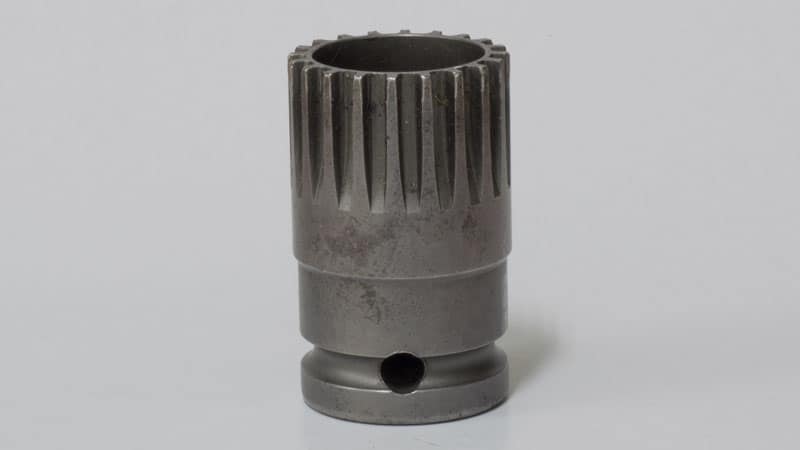
The first is an ISIS bottom bracket tool. This particular brand is not available on Amazon strangely enough but is available elsewhere online.
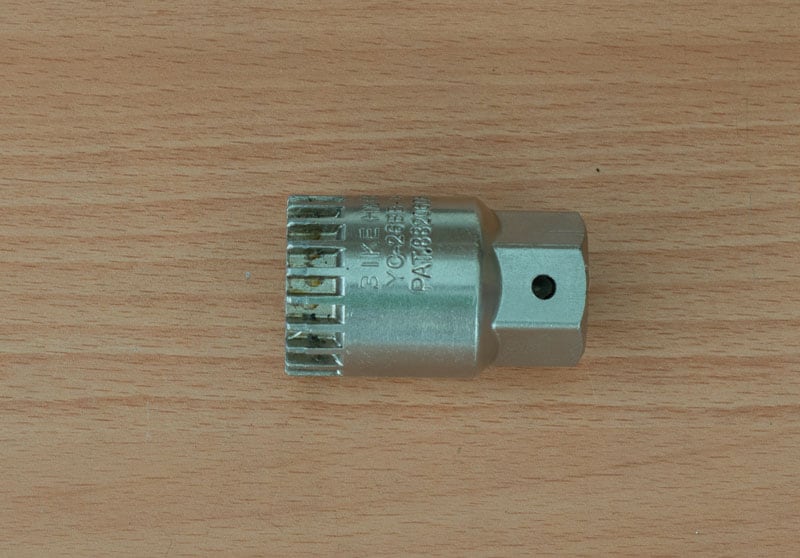
An alternative which does the same job is a “cartridge bottom bracket tool”. This one by Bike Hand is available on Amazon. This model is a bit more stable when engaged with the BB’s splines.
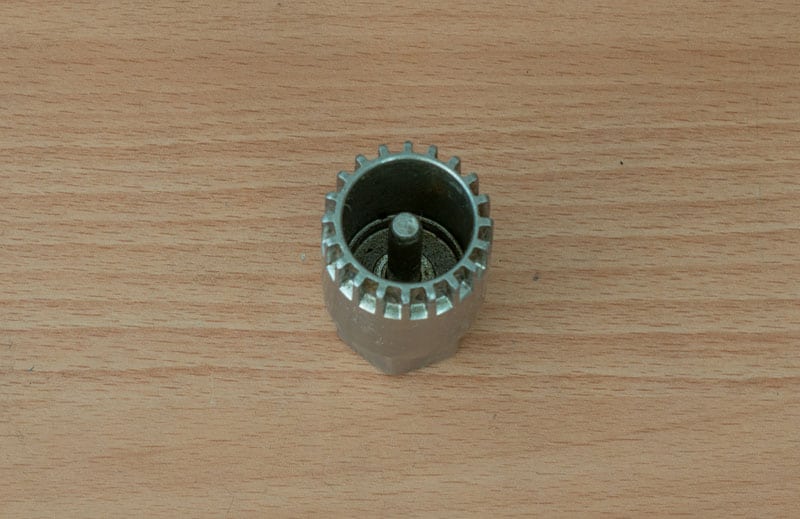
That stability is due to the pin in the center which inserts into the spindle. The pin limits the tool’s sideways movement which, if it happens, will occur quite suddenly under strain.
It will slip out quickly, so be aware and take care.
The first one above is longer and that length means you need to press inwards on the bottom bracket a bit harder at higher torque to keep it steady.
On the plus side, this tool does recess the full length of the BB’s engagement splines whereas the tool with the pin does not.
But, no problem. Either tool will do the job. It’s a matter of getting used to the specifics of whichever tool you opt for.
Note also the half-inch drive socket which will allow connection to a torque wrench—more on that in a jiffy. You always want a tool bit with that half-inch drive.
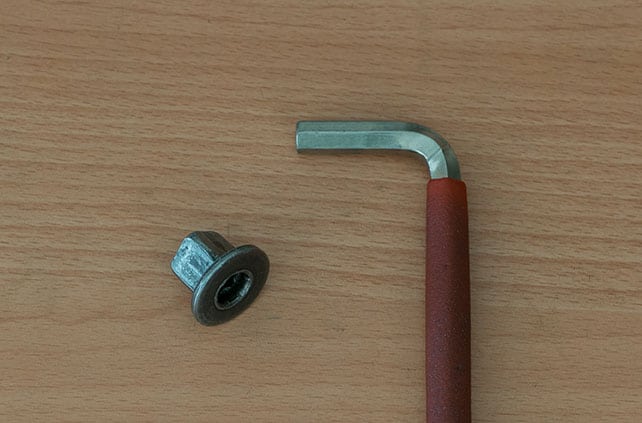
This particular model from Bike Hand has a removable half-inch drive that fits over the end of a matching 8mm Allen wrench.
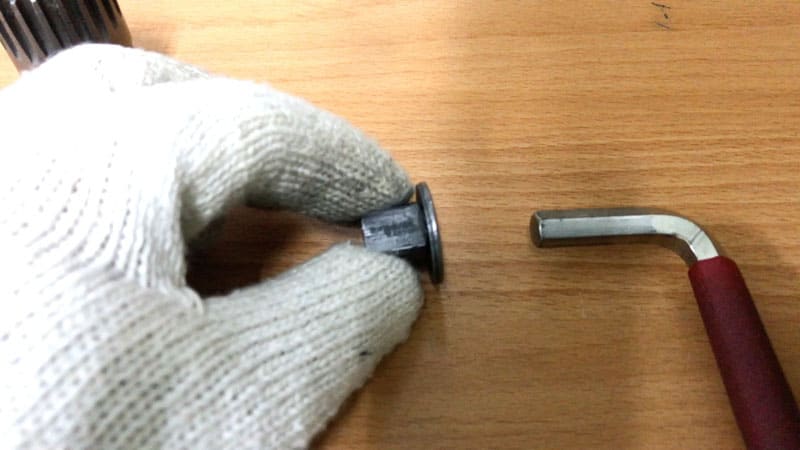
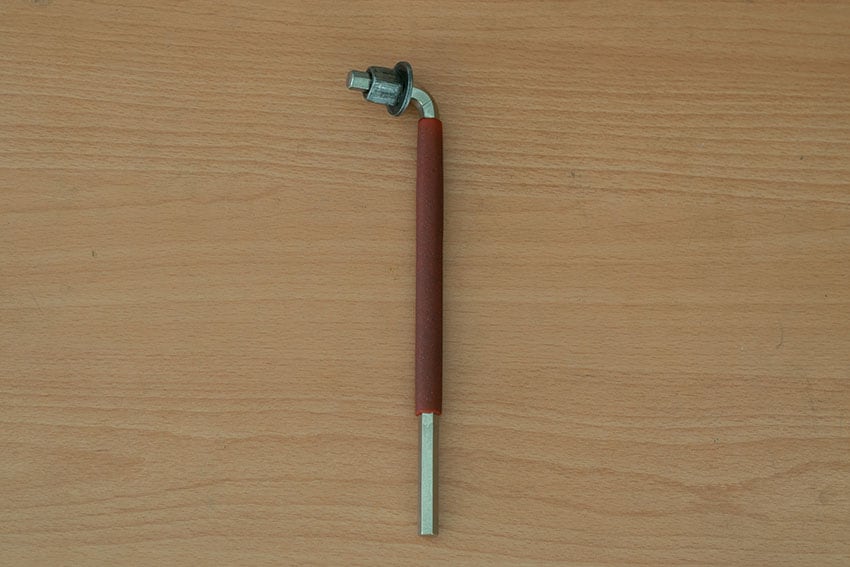
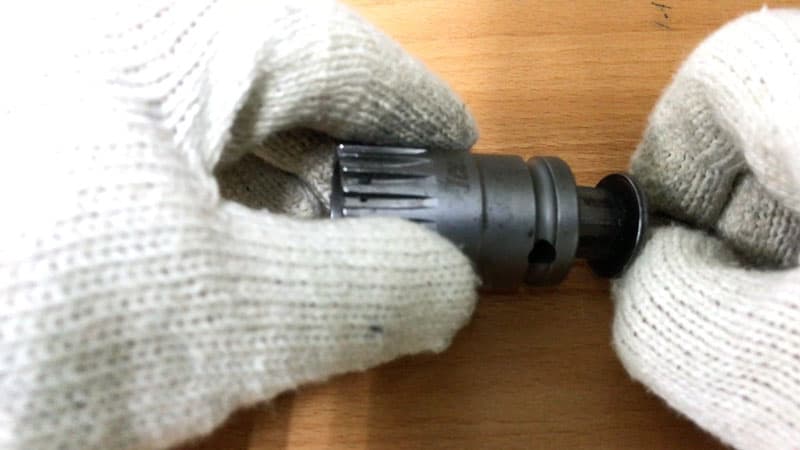
Convenient it may be but the short handle does not give you much leverage. You may well need more than a lick of leverage to break the bottom bracket free of the BB shell.
If the BB is an old one, been in there for a long time, then that initial movement will be hard to get even if you have liberally applied penetrating fluids over an extended time period.
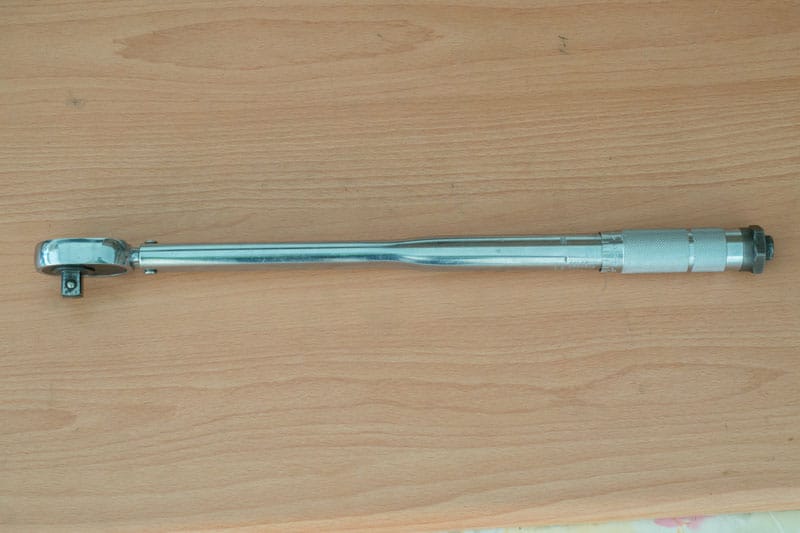
That’s why a (large) torque wrench is especially useful. That long handle allows maximum force with minimum effort to get the BB turning and on its way out of the shell.
This wrench also has the half-inch drive that connects to the BB tool—the guesswork is taken out of tightening your bottom bracket to tolerance.
BOTTOM BRACKET LOCK RING REMOVAL
The first thing to do is loosen then remove the non-drive side lock ring.
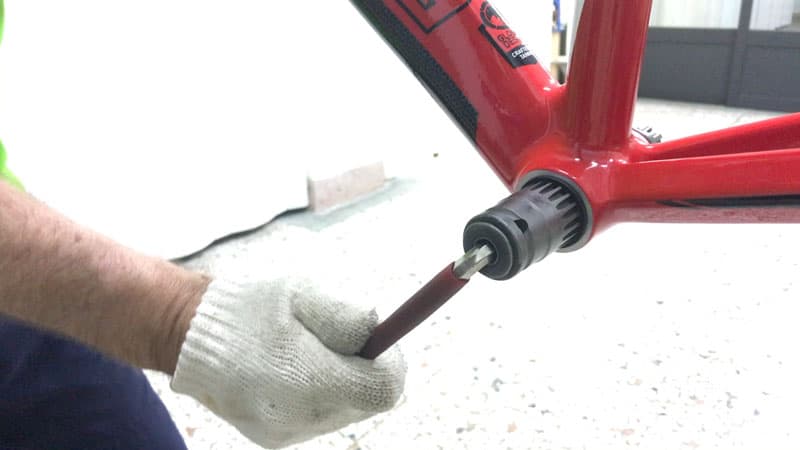
Don’t start with the drive side. You won’t be able to break the drive-side free whilst the lockring is still firmly anchored in the non-drive side BB shell.
For a bottom bracket that has been in place for a long time, you may need to use some penetrating fluids well in advance of attempting the removal.
The lockring will probably not be as tight as the drive-side which, because it is the drive-side, tends to be tighter.
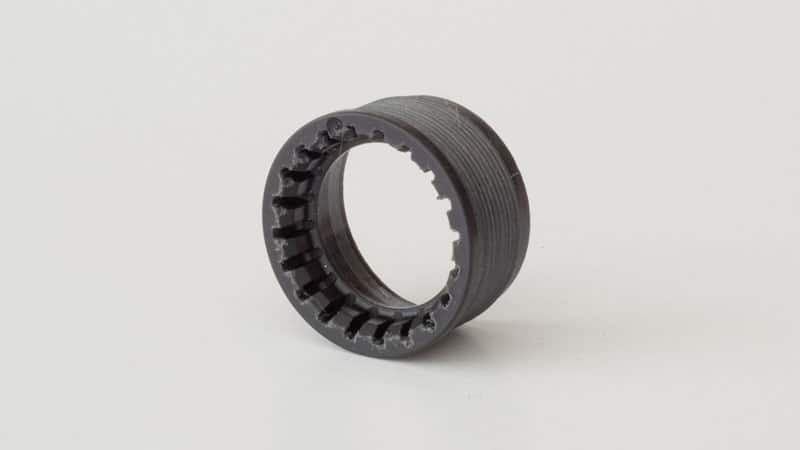
If the square taper bottom bracket in question has a nylon lockring, it will likely not be very firmly seated in the BB shell.
You have to make certain the tool is perfectly fitted to the lockring, otherwise it may slip. The teeth will be damaged making it harder to remove and re-install.
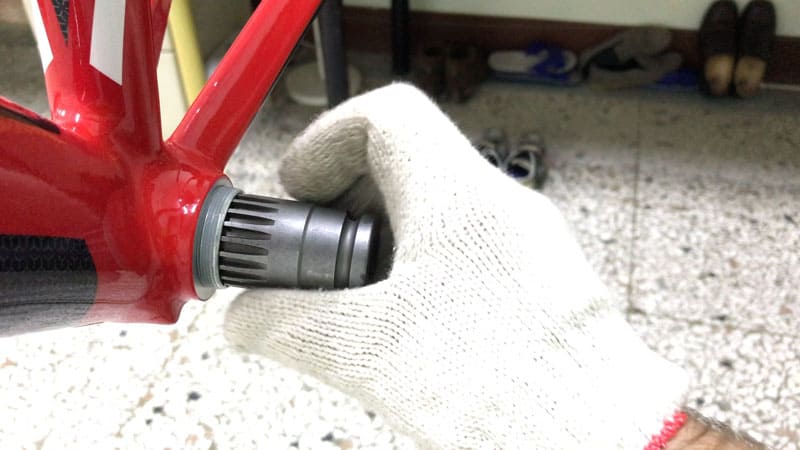
Once you break the lockring free of the BB shell, continue to remove it with the tool and having loosened right up, complete the removal by hand.
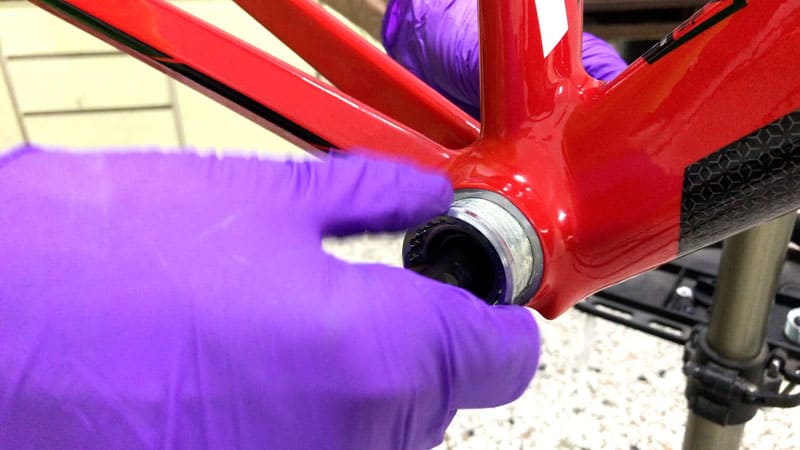
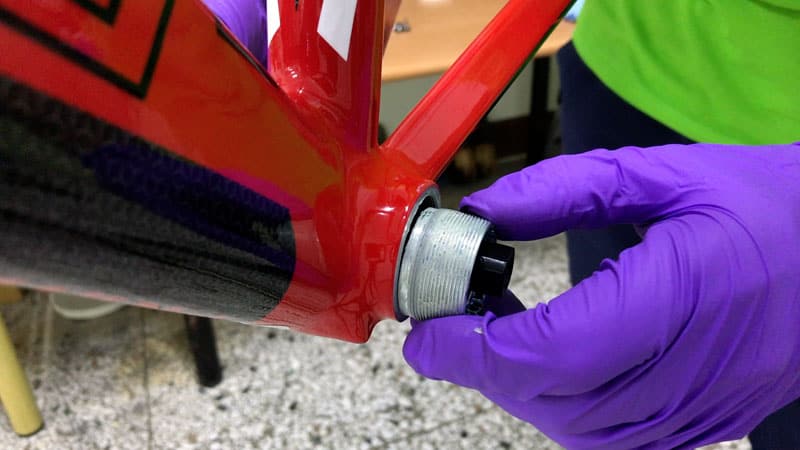
BOTTOM BRACKET DRIVE SIDE
The drive-side is the crucial side of course since that constitutes the cartridge bottom bracket as a whole.
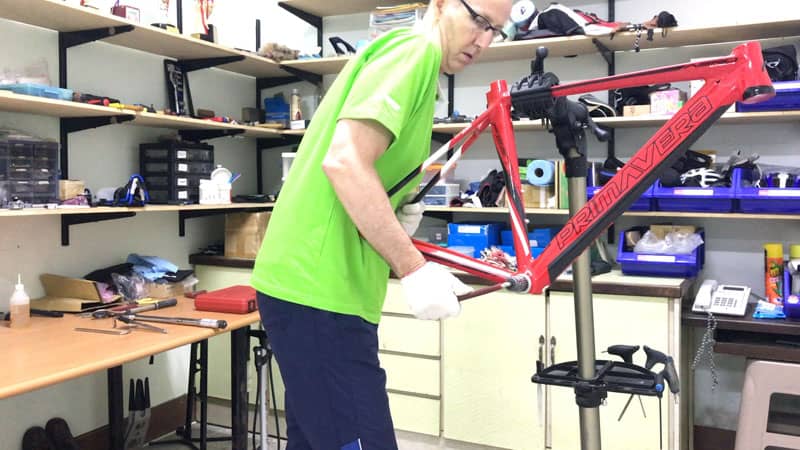
Using the wrench employed to remove the left, non-drive side lockring, may work.
But the drive side of a bottom bracket is generally tighter than the non-drive side. So be prepared for a challenge.
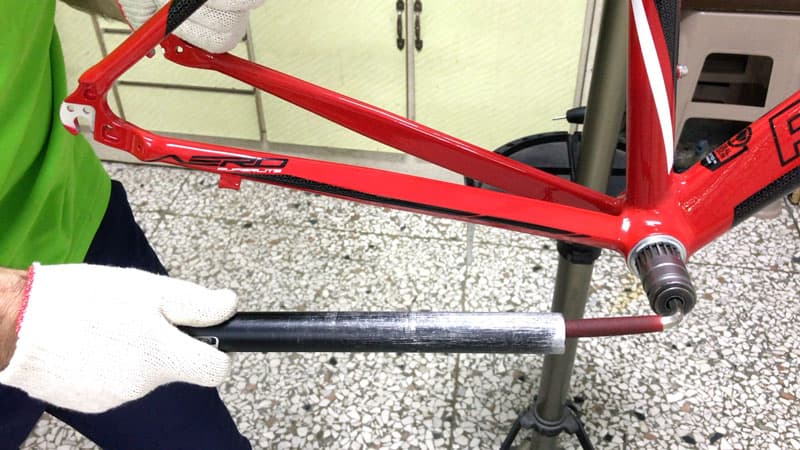
If you don’t have a torque wrench or a long-handled wrench, you’ll still have to find some way to apply leverage.
In the shop here are all sorts of bits and pieces, including a number of seat posts.
A seat post, or basically any type of narrow-gauge pipe, will do the trick. By lengthening the wrench handle you increase the leverage exponentially.
Only bottom brackets corroded into the BB shell resist this assault. If you are faced with that situation, then you’ll have a good excuse to get a new frame—perfectly complementary to a new BB setup.
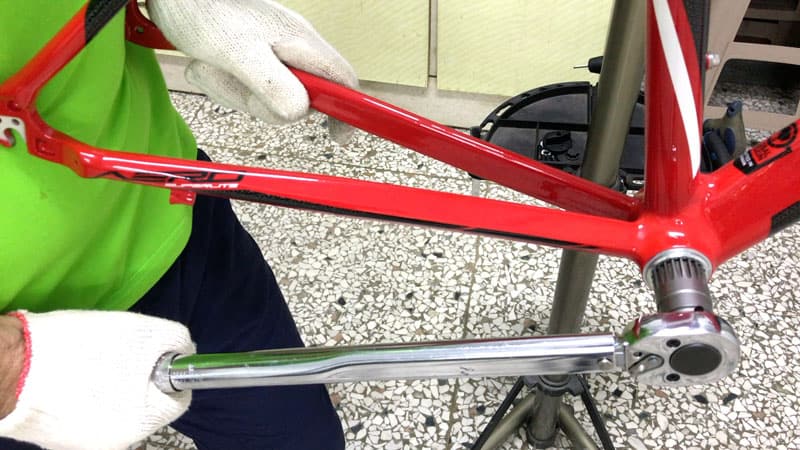
A breaker bar is the standard solution for loosening stubborn bottom brackets.
An old torque wrench can do the job.
A torque wrench with the torque setting cranked up high to, say, 70 Nm or so, will provide all the leverage required if you don’t have a breaker bar or something similar. For mechanics who balk at this, a torque wrench cannot distinguish between the uses to which it’s put. 70 Nm is 70 Nm whether you’re tightening a bolt, or loosening it.
The combined leverage of the longer handle and the high torque setting will be enough to break all but the most stubborn bottom brackets free of their shell.
Or should be . . . you may have to turn the torque right up past 100 Nm if you are faced with a grimly stubborn BB.
To avoid possible damage to the wrench, make sure that the torque setting far exceeds the degree of force required to loosen the bottom bracket enough so the removal can be completed easily.
In many cases the factory installed the BB with a pneumatic tool without regard for maximum torque limits.
That often explains why some bottom brackets are hellishly hard to break free.
In that case you need a bike shop’s help. Bigger shops will likely have a pneumatic tool and driver to do the job.
Anyway, using a large wrench like this one is by far the easiest way.
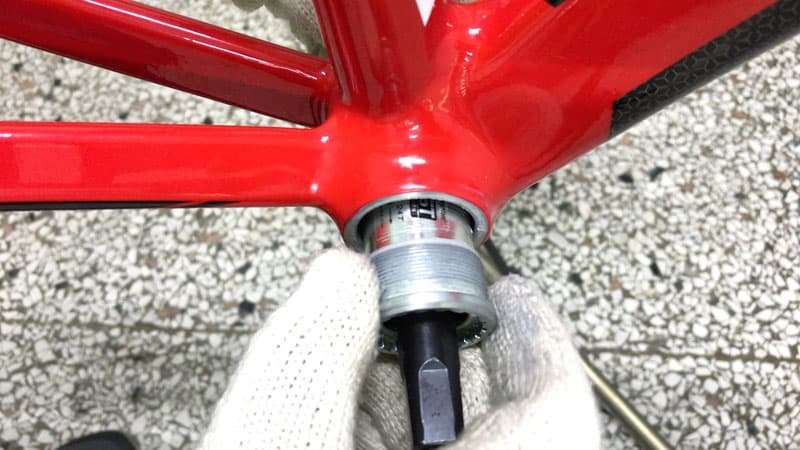
Once you have broken it free all that remains is to continue to turn the bottom bracket cartridge and remove it from the bb shell.
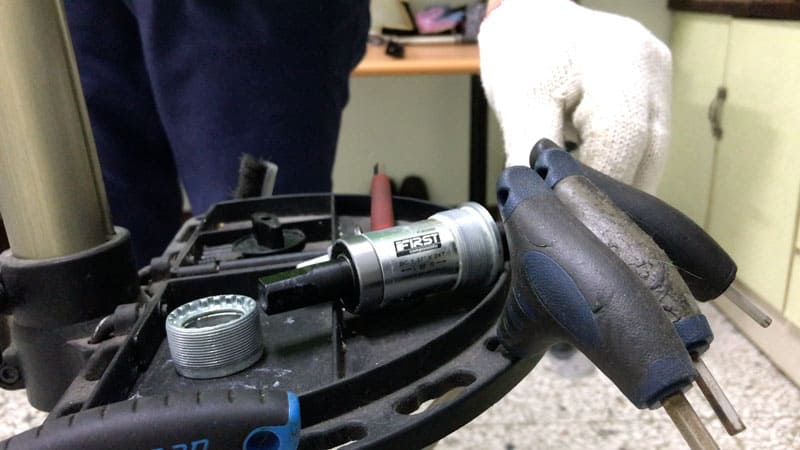
BOTTOM BRACKET TAPPING
Once the old bottom bracket is out, cleaning the bottom bracket shell is essential. Get rid of the old grease . . . get the BB shell as clean as you can.
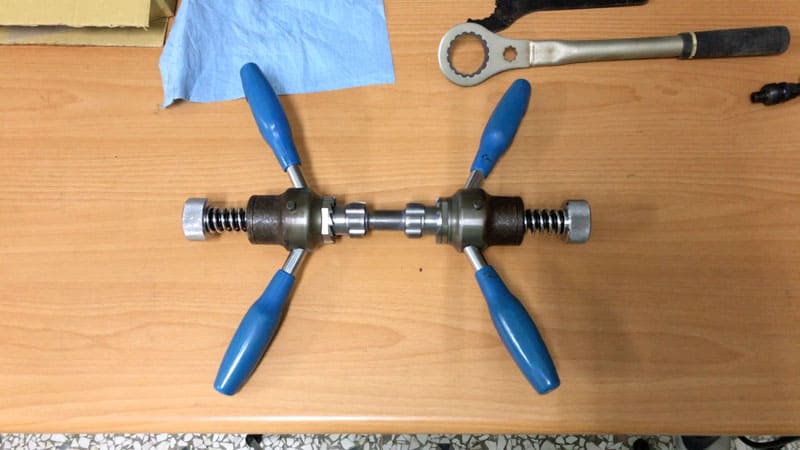
A really, really, really . . . really good idea is to run a tap through the threads to ensure that they are in perfect order.
The threads may have been slightly damaged on removal, or simply never been tapped by the installing mechanic in the first place, a heinous sin if ever there was one.
Frame manufacturers outsource bottom bracket shell thread cutting to specialists who do a first-rate job. Still, tapping (and facing . . . but that’s for another day) the threads to perfection is the professional thing to do.
You can also unknowingly damage the threads right at the bb shell’s edge as you are removing the bb unit.
That may make seating the bottom bracket exactly into the right track in the threads very difficult. When re-installing the old BB or a new one the result may be a cross threaded BB . . . to be avoided, absolutely avoided.
A tapping (and facing) tool is quite expensive. Plus you’re not going to use it very often at all, so best to get a bike shop to do this.
If you are game to have a go yourself, or wish to make sure your local bike mechanic knows what he’s doing, the procedure goes as follows.
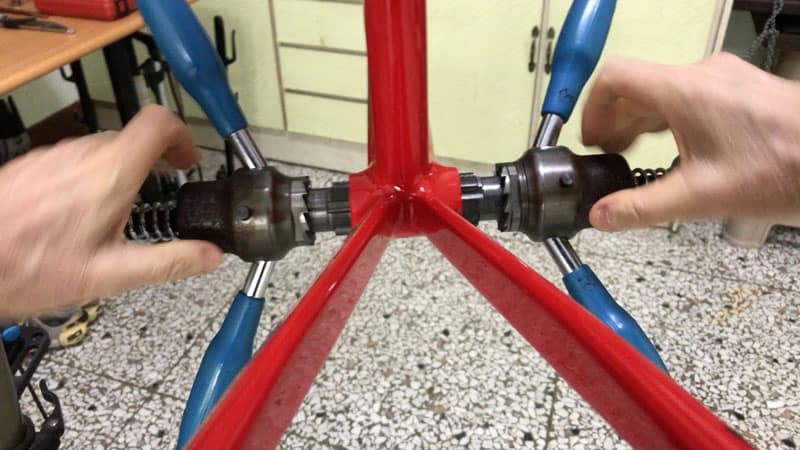
The tapping bits need to be carefully rotated into the BB shell’s threads.
You or your bike shop guy need to take extreme care for this stage. The bits are super-hardened steel and will cut into aluminum like it’s butter.
If the bit is not seated exactly in the threads correctly from the very start, you will ruin them. There will be immediate resistance. If you cut, you will be cutting incorrectly.
In this first stage just turn the bits into the bottom bracket shell just enough that they are supported by the shell . . . don’t tend to sag towards the floor.
Once the bits are properly seated they will turn smoothly, effortlessly even. Any resistance after this stage, however, means the threads need to be cut.
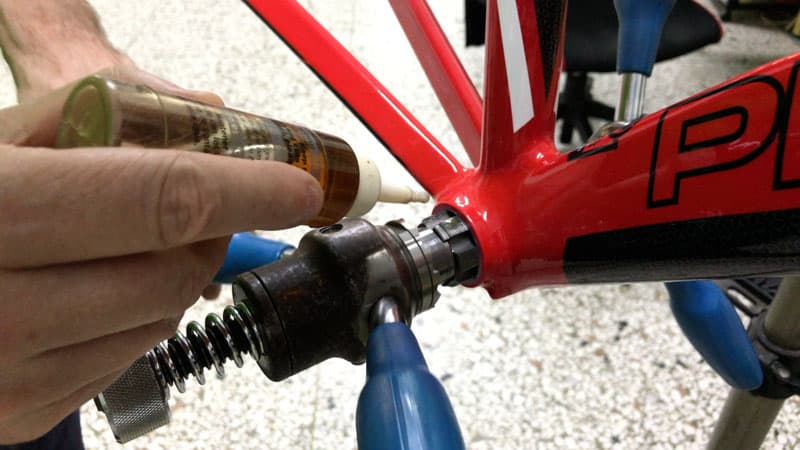
Apply cutting oil to assist in preserving the tool’s cutting edges.
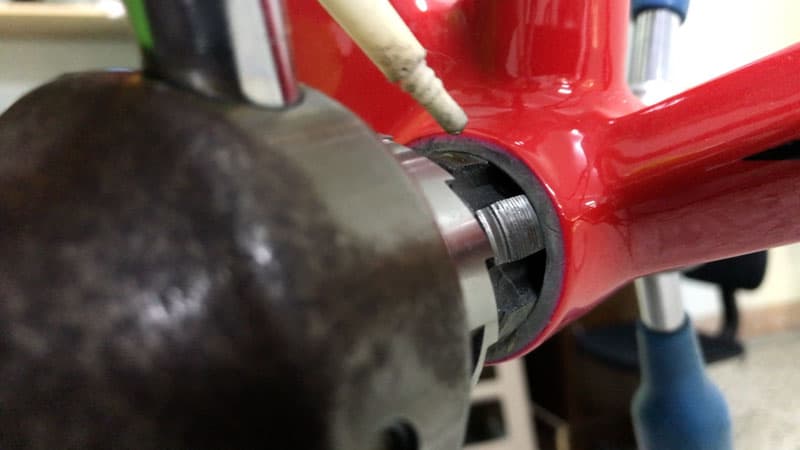
The bit will both rotate easier and cut more keenly.
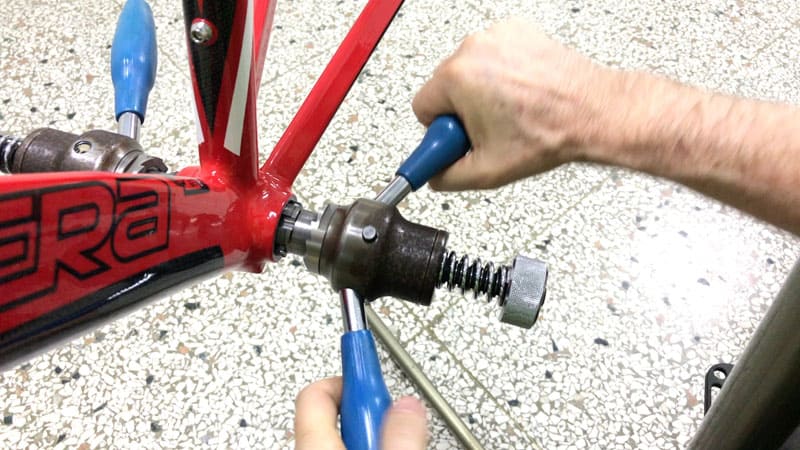
Easy turning will help in spades should the threads really need cutting, which they will if they are damaged.
If there is any resistance, this means the shell threads need to be cut. Rotate into the cut for one or one-and-a-half turns. Then reverse direction, loosening off.
Cut. Release. Cut. Release.
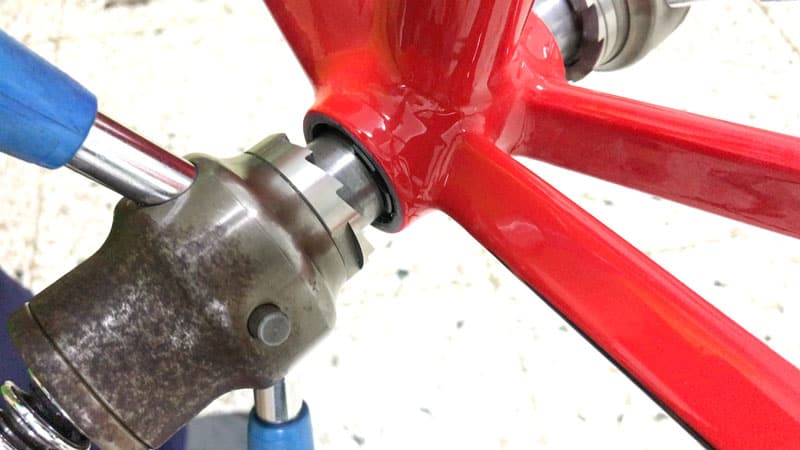
Continue to turn the bits into the bottom bracket shell until each is fully inserted.
When each bit has reached the limit inside the BB shell, smoothly turn the bits in the opposite direction to remove them.
Make sure you get the removal process right.
You need to support the tool and the bits as they approach the BB shell edge (face) and as you remove them.
If not then a bit will drop away from the BB shell as it exits and damage the threads at the very edge.
You will be much more likely to cross-thread the bottom bracket as you introduce it to those initial threads since there will be resistance from those damaged threads.
That means forcing the bottom bracket threads to sit (seemingly) correctly in the BB shell.
But it probably won’t be correct, and the force you will have to apply will likely ruin the threads.
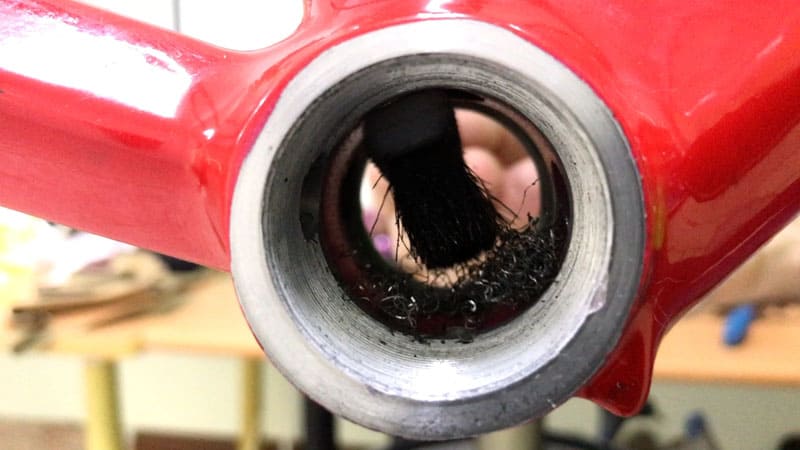
Having successfully removed the tapping tool from the BB shell, you need to clean any detritus or aluminum shavings from any thread cutting.
Give the shell a brush then a wipe with a shop cloth or rag.
GREASING the BOTTOM BRACKET
Applying grease to the bottom bracket shell along with the bottom bracket cup threads is extremely important.
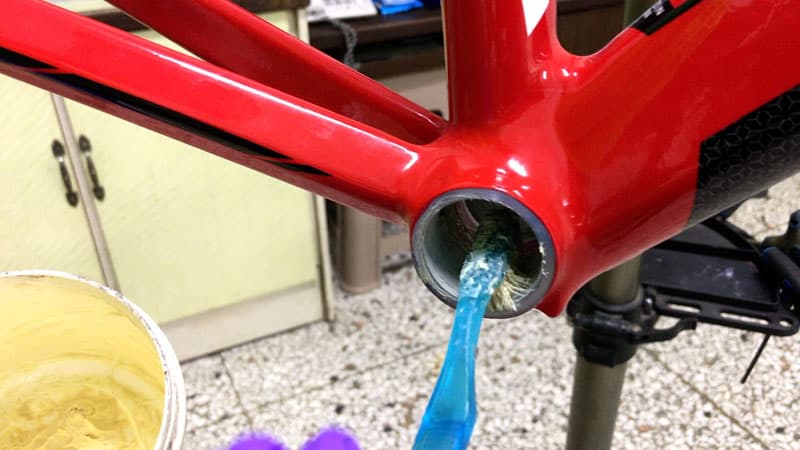
At the very least, removing the bottom bracket in the future will be infinitely easier. And there will be less wear and tear . . . yes, I have seen bottom brackets that were not greased rattling around in shells that have been stripped of thread!
A pair of nitrile gloves for handling the grease is a good idea, especially if you are keen on keeping greasy finger marks off the frame when doing subsequent work.
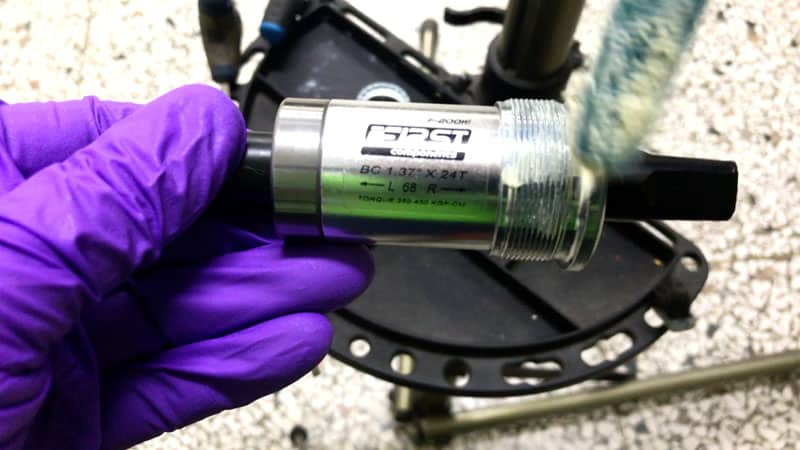
Give the bottom bracket shell a liberal coating. More is more in this case; no harm done in applying more than you think is necessary . . . lots of harm can result where the grease is not enough.
If you have not tapped the threads, or don’t intend to, then thoroughly wipe down the BB shell threads. Use degreaser if you have some handy. This way you’ll clean out any fine grit that has settled in stubborn grease deposits deep in the threads.
INSTALLING the BOTTOM BRACKET
Begin with the square taper bottom bracket complete unit on the drive (right) side.

Fitting the bottom bracket threads exactly to the BB shell threads is crucially important. Too easy to think you have got it right, begin turning . . . then come up against resistance.
If you’ve tapped the BB shells and you are now finding resistance, it will be alright to slowly and carefully continue turning the bottom bracket into the shell.
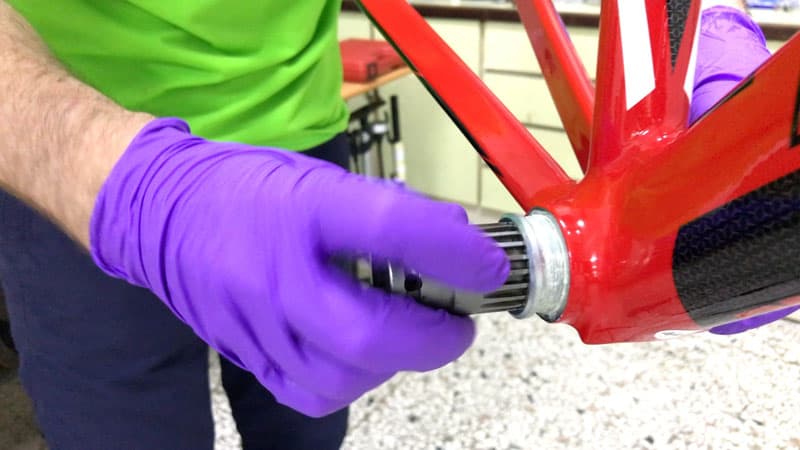
Use a tool without a wrench to do this. If you need a wrench at this stage it is more than likely you have cross-threaded the bottom bracket into the shell—trust me on this . . . it is very easy to do.
By continuing to force the bottom bracket you will ruin the threads which will mean they will have to be re-cut. A robust tapping tool is what you will need to complete that task.
In the event, reverse the procedure, remove the BB and carefully inspect the threads. If there is no damage that means the installation requires more leverage than normally would be the case.
Proceed. With caution.
An effective technique to “click” the bottom bracket into the right grooves is to turn it back and forth very slightly, or more to the right than the left (it’s a left-hand thread of course).
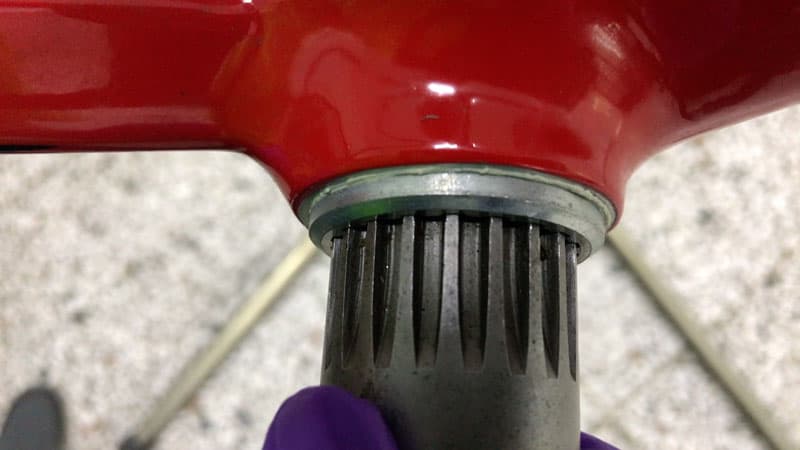
When you feel the BB seat into the thread, reverse direction ie. turn the bottom bracket to the left—it should turn smoothly into the BB shell all the way until the bottom bracket and the BB shell face are touching.
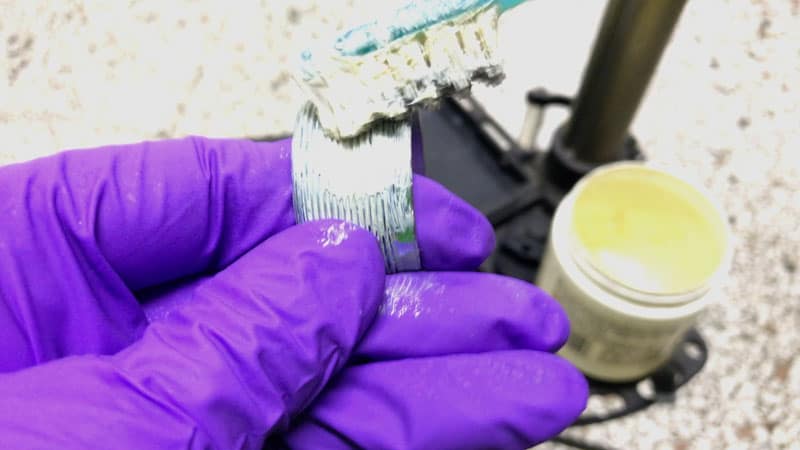
Grease the lockring.

Now install the lockring in the non-drive side.
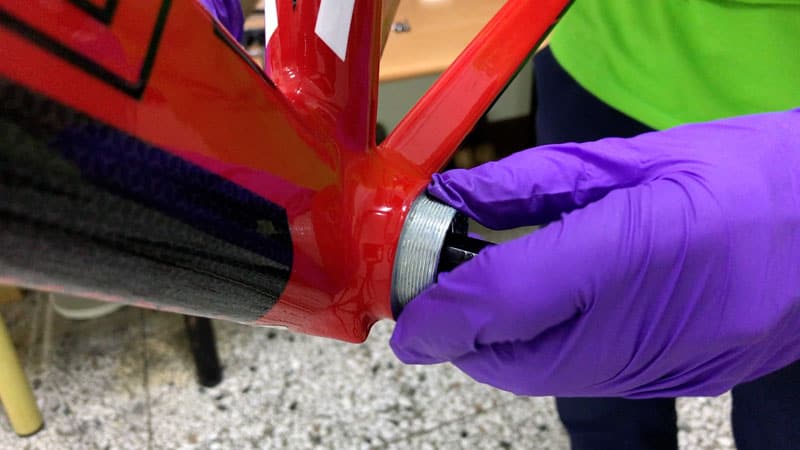
Turn it is as far as it will go by hand.
With the bottom bracket cartridge sitting flush against the BB face and the lockring installed, the torque now needs to be adjusted to tolerance.
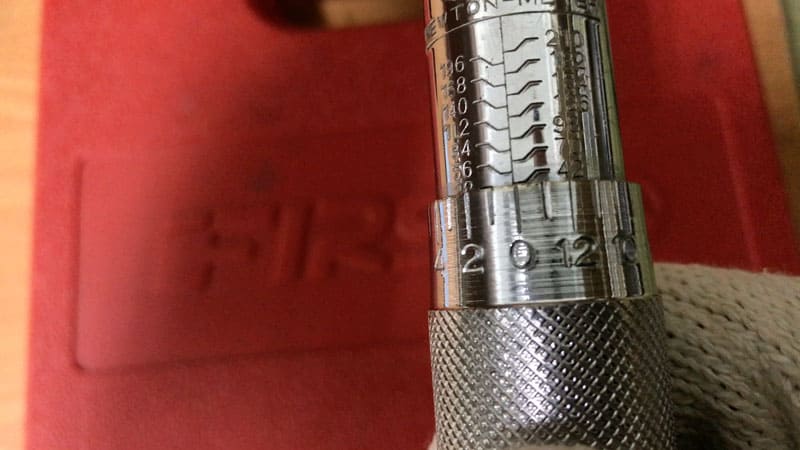
If you aim for a torque setting of 35Nm on the lower end and 45Nm on the upper end, you’ll be fine.
Achieving anything over 40Nm without a long-handled torque wrench will be extremely difficult.
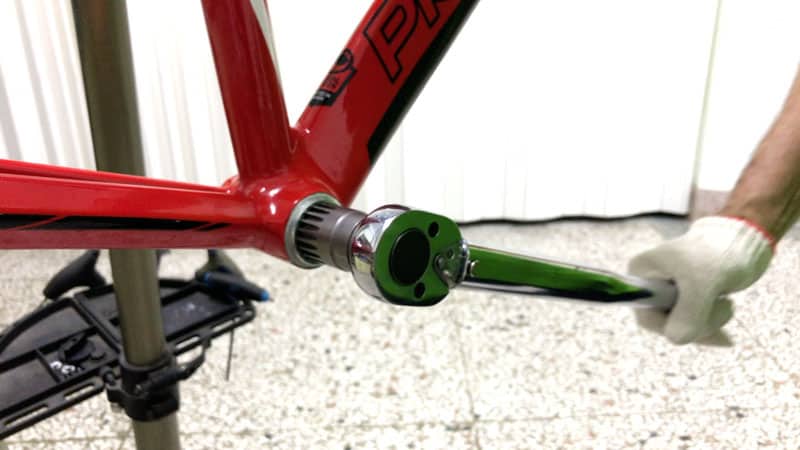
If you have a good feel for this sort of job, use a short handled (non-torque wrench) drive. Crank it round until you reach the point where you can’t turn it anymore. You’ll be up around 38Nm, which will be fine.
Again, if you have a long-handled torque wrench you’ll achieve a torque setting within tolerance with ease. You’ll have both leverage and know you have reached tolerance.
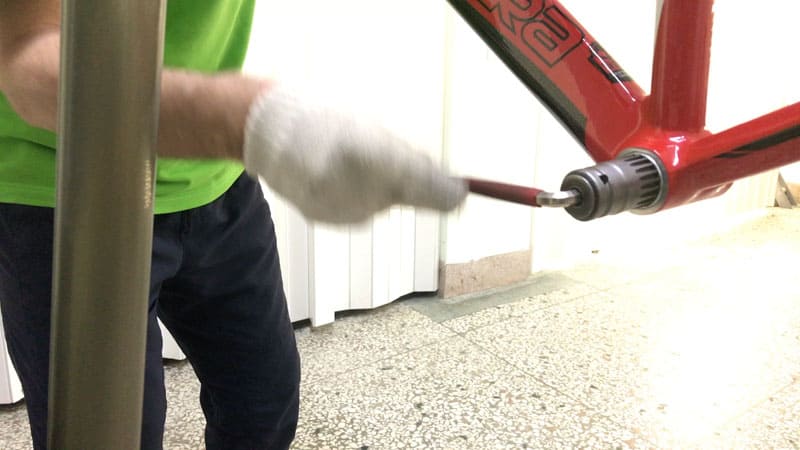
For the non-drive side, a torque wrench is not necessary.
But, again, just for the leverage afforded you should have access to a long-handled torque wrench.

Achieving a snug fit will be fine, particularly where the lock ring is nylon—there’s certainly no need for a torque wrench.
FINAL COMMENTS
A square taper bottom bracket in the form of a cartridge is a reliable bottom bracket for your bike, easy to maintain and replace,
In the event that you do need to replace your BB, following the steps outlined here will ensure you get it right.
For maximum benefit, do check out the video we made on the subject.
And subscribe
to our Youtube Channel while you are at it.
What have we missed here?
What other elements need to be taken into account in removing and installing a square taper bottom bracket in particular?
Let us know in the comments!

6 thoughts on “Square Taper Bottom Bracket: The Ultimate Guide”
what is the reason to use different materials for cups, nylon, steel and alloy? What is the main difference between them?
Cost. As a manufacturer, we give brands options for providing bottom brackets to a wide range of cyclists—brands can offer bottom brackets at different price points.
My Aluminum Alloy frame and the BB shell has been sitting there for 5 years. Had to resort to penetrating oil and brute force, what a nightmare. Thank you so much for the very detailed instructions.
My first attempt was Hellish.
BBTool keep slipping, Couldn’t get a grip and had to put the bike upright to get good leverage turning. Mess was everywhere and frustrated. I ruined the teeth on the driveside using the BBTool just awful.
Yes…it’s really hard when a BB has been in there for ages. Hope you managed to get it loose in the end!
Hello, maybe someone know wich side is R and L for this axis:
https://www.firstcomponents.com/wp-content/uploads/2018/10/cotterless-axle_-1024×641.jpg
Unfortunately there is much left out here, so this cannot be considered comprehensive in any way. e.g.
Some shimano BBs are not symetrical and the tapers are longer on one side than the other. So if you get a “standard” 68×122 for example the chainline may differ or the LHS crank from frame distance may differ. e.g with Exage group sets.
Also I see no mention of “square on ” or “diamond on” ie. the orientation of the square hole in the cranks which varies.
There was much “cross over” between 1986-1990 Road/MTB and mixing of groupsets. Also some Altus BB are nolonger available, so contrary to the sales pitch, you can actually service a sealed BB and replace the bearings as with any BB.